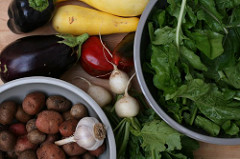Cows like any other mammals give birth to young ones and produce milk to nurture them. Cows take about nine months to give birth to a calf and would look after them from seven months to one year. And like any others feeds the baby nine to twelve times a day.
ARTICLE BODY:
When we look into our history, we know that centralized farming existed in most of the villages and cities. Many residents had enough land to keep cows and sell milk to their neighbors. However, in the modern world, very few people have cows due to the lack to space for the cows to grace. Even though people have enough money to buy milk, they don’t have place or time to rear cows.
Depending on the location, people today prefer to tame cows and have a farm of their own. For example, in New Hampshire about seventy percent of the farm land is associated with dairy farming. However, there are hardly 126 dairy farms left in the state today. New England has lost about 150 local farms in the past two years and has only about 2,000 farms in the state. This is due to the farmers being paid less for the milk they produce. It is said that during the recession the hardest hit is the dairy farms. As dairying is the cornerstone for New England, most of the cows are found in Vermont, a lot of this milk is bought by the consumers from Massachusetts. For these people dairy farming is still critical as the prices are the lowest in the past thirty years.
Cows like any other mammals give birth to young ones and produce milk to nurture them. Normally, a cows gestation period is about nine months and it would nurse them from seven months to one year. And like any others feeds the baby nine to twelve times a day. The dairy farms generally do not allow this to happen as they need to extract most of the milk to be sent to the market. In this process most of the dairy farms separate the young ones from their mothers which cause a great distress. The male calves are often killed and sent to slaughterhouses for veal or beef. Females become dairy cows like their mothers; frequent replacement of herd members is necessary because the death rate of dairy cows is very high. The average number of years a cow lives is 20. However, in a dairy, a cow generally lives only for 3 to 4 years due to constant lactation and frequent disease.
The last few decades have been a wonderful period for the dairy farming and this has experienced a sudden growth in the southwestern United States. The climatic condition in this area is very different from that of places like New England which is filled with grasslands. The dairy cattle there are housed in unpaved dirt lots, or dry lots. The undeveloped surface of such lots is hard on the cows and causes frequent lameness. Even heavy rains create layers of mud and manure several inches thick. This makes it even more difficult or impossible for the cows to walk or lie down on a dry surface, which dairy experts recognize as a health requirement for cows.
However, the growth of the organic milk industry in the 1990s and the early 2000s has attracted the attention of agribusinesses, whose desire to participate in this lucrative market has led them to compromise organic standards and lobby for the degradation of such regulations at the federal level. Today the organic milk industry has attempted to transfer their factory-farm dairying techniques to production of organic milk. Cleanliness maintained in these types of farming is very important for the health of the cows. I recently visited one of my friend’s houses where he explained me a few things about dairy farming. He said he has an ADT Security Systems installed in his house. This would alert any kind of unauthorized entry into his premises.
Stuart a freelance writer has written topics on poultry farming and green houses. After listening to his friends experience and inspired by the ADT security systems, he has installed in his house the same and he likes to write about dairy farming as well.
Find More Organic Farms Articles

